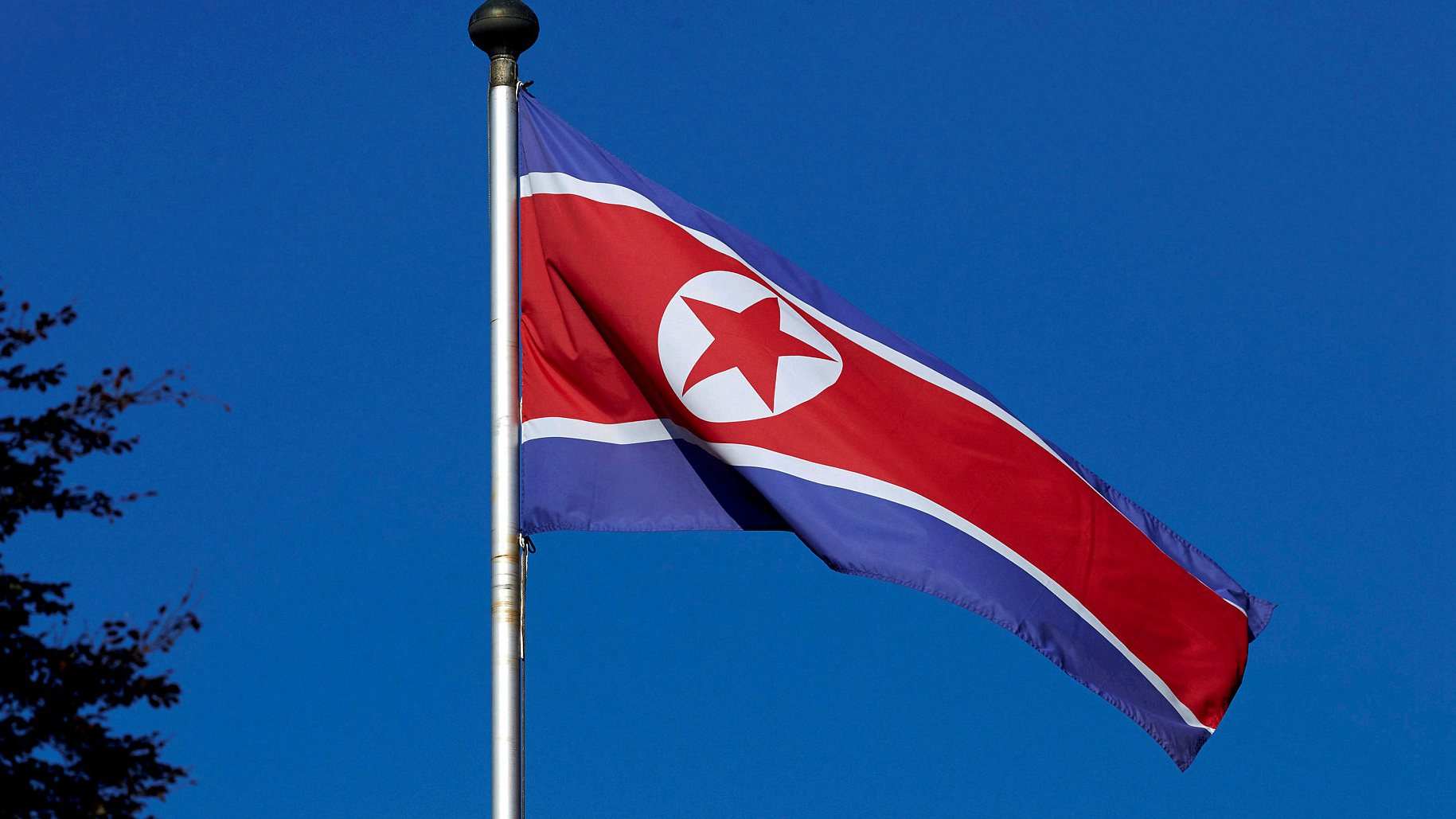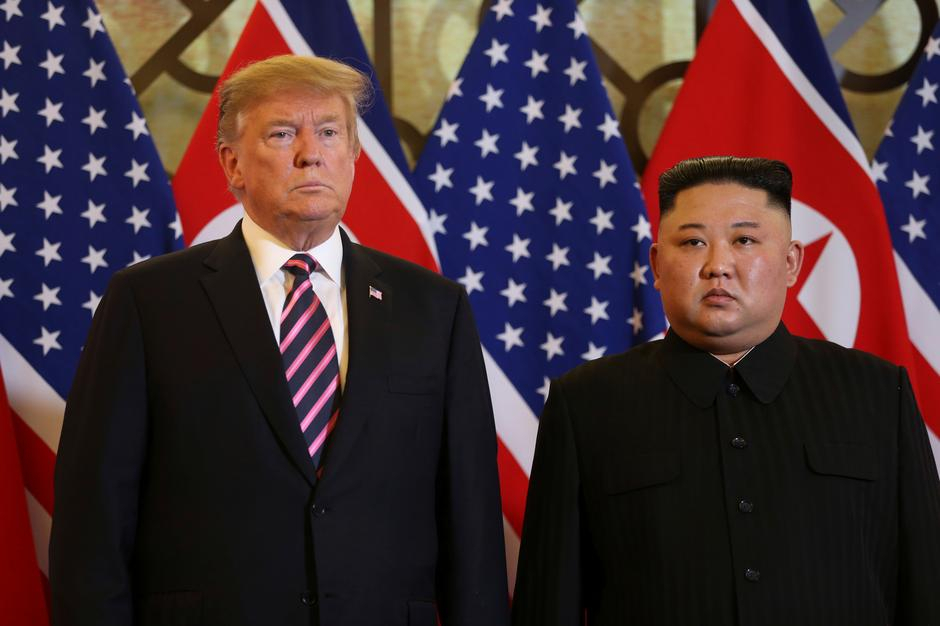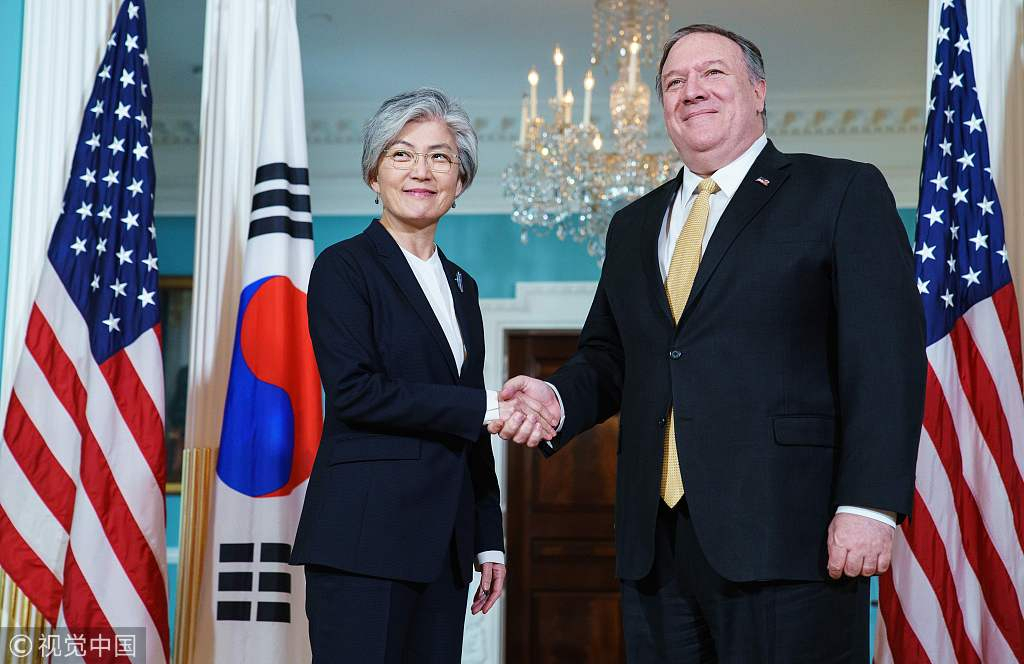
Opinion
12:16, 18-Apr-2019
Pyongyang's new warning to Washington
Tom Fowdy

Editor's note: Tom Fowdy is a British political and international relations analyst and a graduate of Durham and Oxford universities. He writes on topics pertaining to China, the DPRK, Britain and the U.S. The article reflects the author's opinion, and not necessarily the views of CGTN.
On Thursday morning the Korean Central News Agency (KCNA) reported that the Democratic People's Republic of Korea (DPRK) leader Kim Jong Un had overseen the testing of a new "tactical guided weapon." The report described the weapon as having a "guided flight" and containing a "powerful warhead," but nevertheless did not offer concrete details of what the weapon specifically was, nor did they provide any photos of the test.
The United States Department of State responded to the news by noting that whilst they were looking into the event, there were no signs that any kind of missile was launched, which would have violated the agreement that the country would pause nuclear and ballistic testing agreed a year ago between the two sides.
What exactly then is going on? This is a move that has carefully been determined within the boundaries of acceptability. As a low key provocation, it is not designed to scupper diplomacy, but instead should be interpreted as a demonstration of displeasure towards Washington and Seoul in view of the path negotiations have been taking.

U.S. President Donald Trump (L) and DPRK leader Kim Jong Un pose during their second summit in Hanoi, Vietnam, February 27, 2019. /Reuters Photo
U.S. President Donald Trump (L) and DPRK leader Kim Jong Un pose during their second summit in Hanoi, Vietnam, February 27, 2019. /Reuters Photo
With Pyongyang clearly setting out its terms in the aftermath of the Hanoi summit, the testing is, in turn, a warning that if the United States is not prepared to offer flexibility, then Pyongyang may return to bigger provocations in the future. The message, in that case, is clear: the demand for complete and unilateral denuclearisation must be dropped, otherwise another path waits.
First of all, it should be made clear that the DPRK wants to talk to the United States. In more than a few ways it is in the national interest of Kim to pursue dialogue with Washington and reset the relationship between the two countries. However, such road has its limits.
Never to any extent has Pyongyang signaled a willingness to agree to what they perceive as national capitulation. Owing to the political capital, which has been invested in the regime's nuclear achievements and trajectory, the needs of the country are firmly set upon securing negotiations that ultimately improve not weaken their strategic standing. To do anything to the contrary of that would be a political failure which would undermine the leadership of Kim.
As a result, following the collapse of the summit in Hanoi and the subsequent hardening of American demands, Kim has faced no choice but to subsequently stand his ground. To do so, the regime has been cautiously and carefully toying with the possibility that talks may not last forever, engaging in low key warnings which send a strong message, but are nevertheless not strong enough to shut the door outright and kick start a crisis.

U.S. Secretary of State Mike Pompeo (R) meets with ROK Foreign Minister Kang Kyung-wha at the State Department in Washington, DC, March 29, 2019. /VCG Photo
U.S. Secretary of State Mike Pompeo (R) meets with ROK Foreign Minister Kang Kyung-wha at the State Department in Washington, DC, March 29, 2019. /VCG Photo
There have been a number of things to observe since February, including reconstructing facilities Pyongyang uses to launch satellites, Kim promoting hardliners in his party leadership, setting a "year" deadline, toying with withdrawing staff from the DPRK-Republic of Korea (ROK) diplomatic liaison office in Kaesong and now of course, testing a low key weapon.
On the testing of the weapon itself, the timing is significant. A week ago ROK President Moon Jae-in visited Washington and met with U.S. President Donald Trump. He requested flexibility on sanction relief and was denied, only for the same absolutist position to be reiterated by Washington.
The test might be interpreted as a direct reaction to it, a textbook form of Pyongyang's "retaliatory diplomacy."
The weapon itself is in fact insignificant. It does not change the balance of power on the Korean Peninsula, nor does it have any implications on the country's nuclear capabilities. It is an action calibrated carefully within the boundaries of what is acceptable in the status-quo diplomacy.
Nevertheless, the message behind it is clear. Whilst the caution manifest within it shows the DPRK very much wants to continue diplomacy at this stage, if however, Washington does not change their position within the designated time period, then a clear warning is being shown that there are things ahead which may come if they cannot negotiate fairly.
This thus should be interpreted in the light that Pyongyang does not "want to do this," they do not "want to go down this path," but if they will be further pressed they will ultimately feel there is no other choice but doing so. Kim is quite clearly and firmly setting his terms and sticking to them. The domestic scene of the DPRK is preparing for a prolonged struggle.
There will be quite bluntly, no unilaterally forced complete denuclearization. Thus, if the United States is truly serious about making progress there and not throwing away everything that has been achieved so far, then the policy ultimately has to change for the greater good.
(If you want to contribute and have specific expertise, please contact us at opinions@cgtn.com.)

SITEMAP
Copyright © 2018 CGTN. Beijing ICP prepared NO.16065310-3
Copyright © 2018 CGTN. Beijing ICP prepared NO.16065310-3